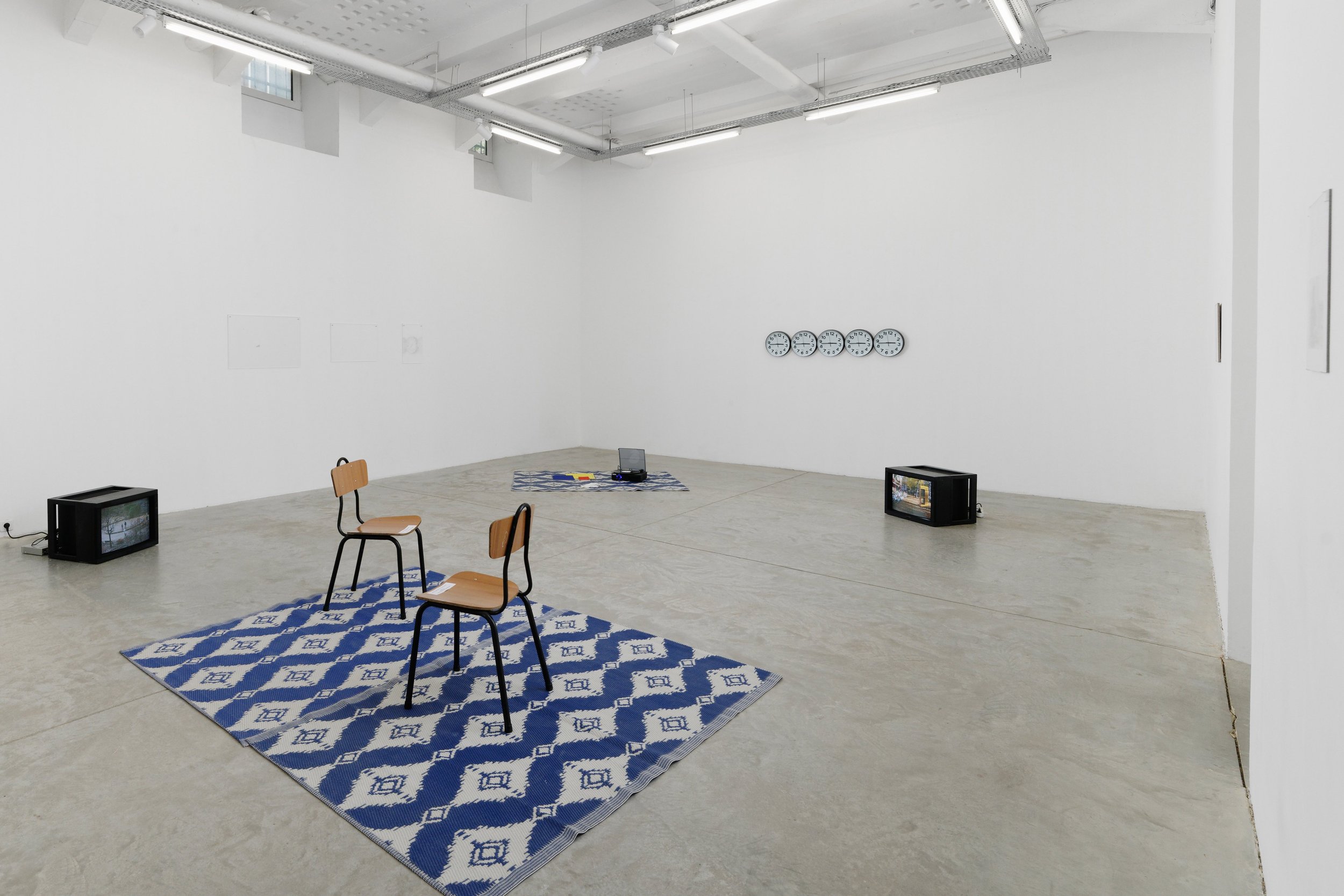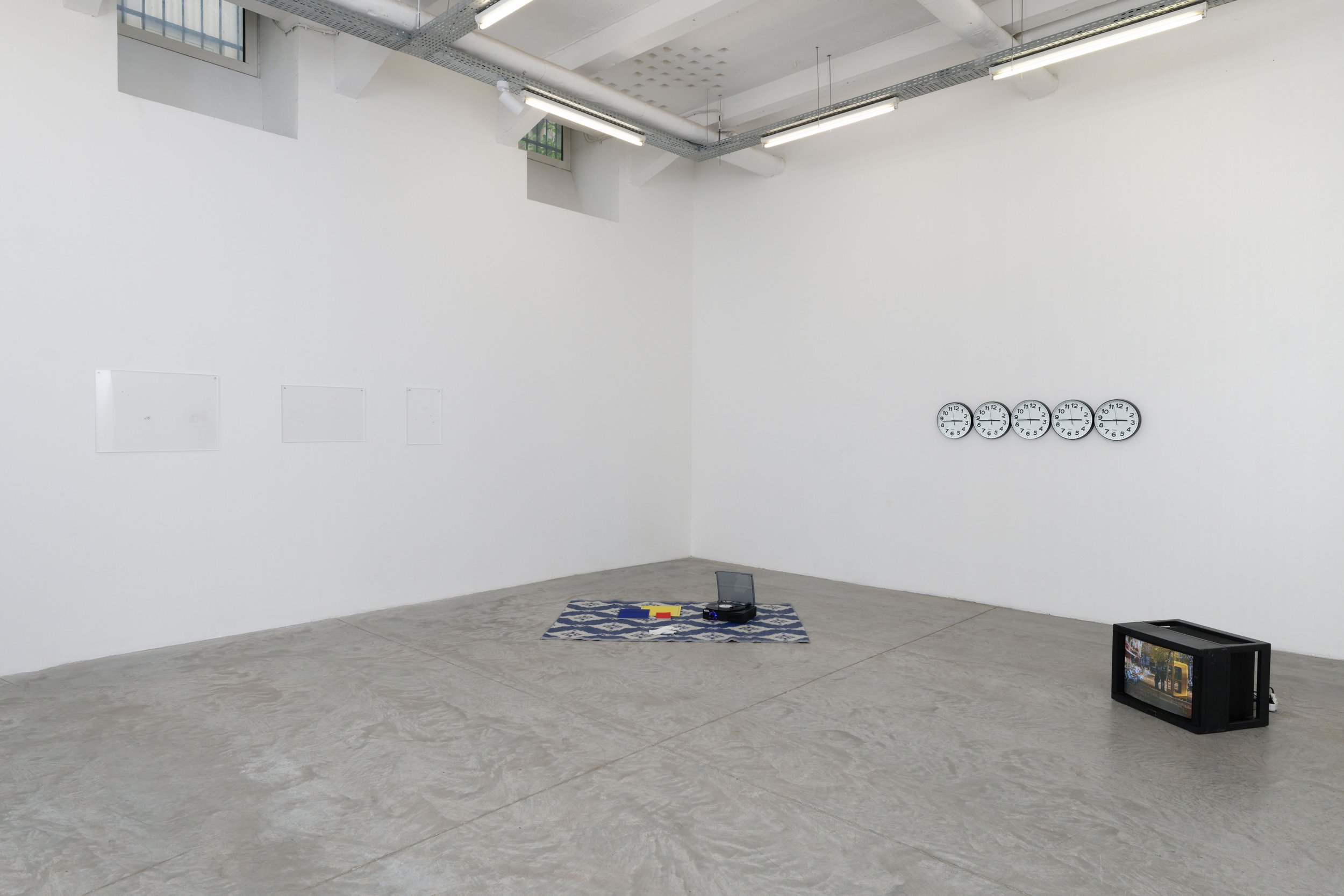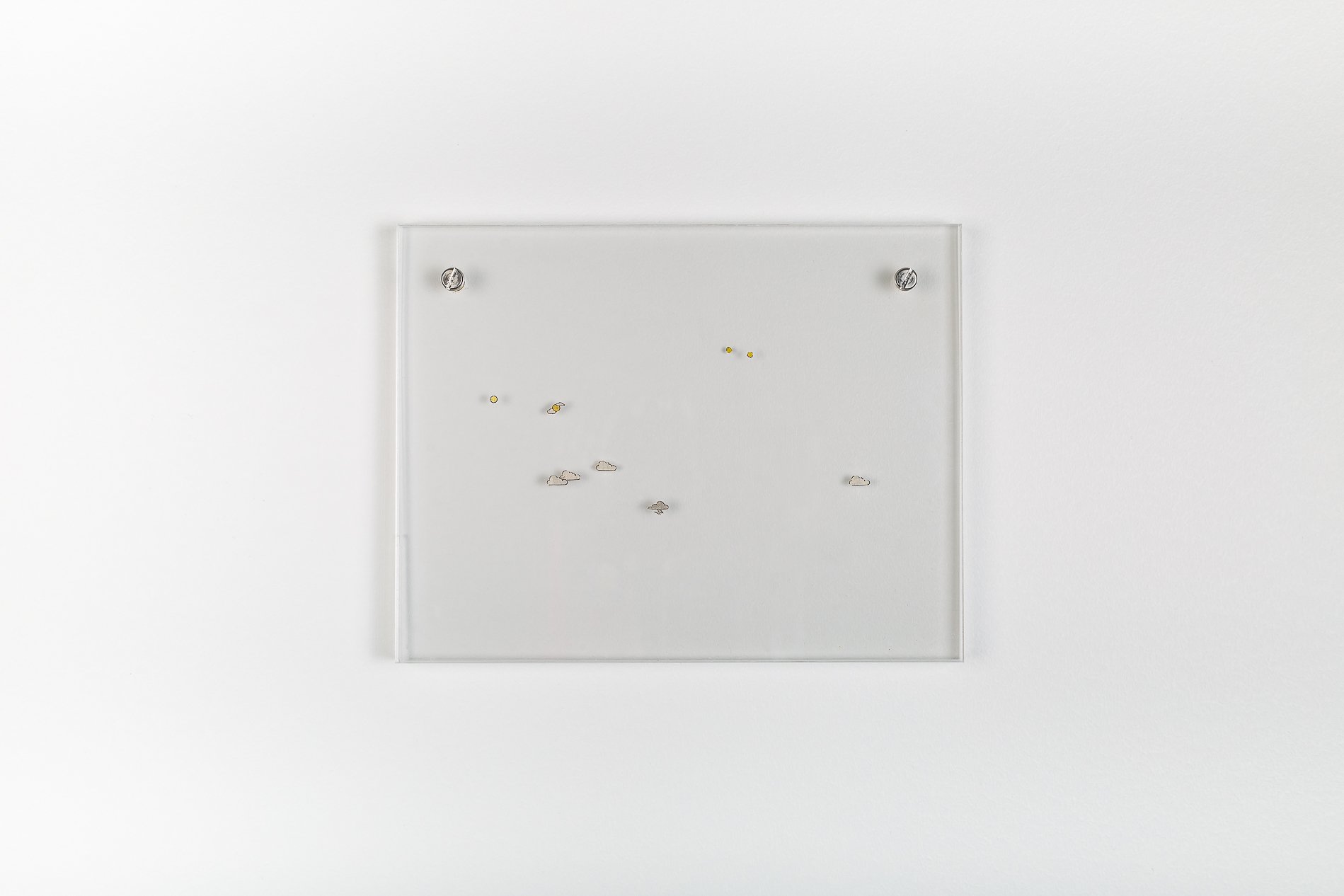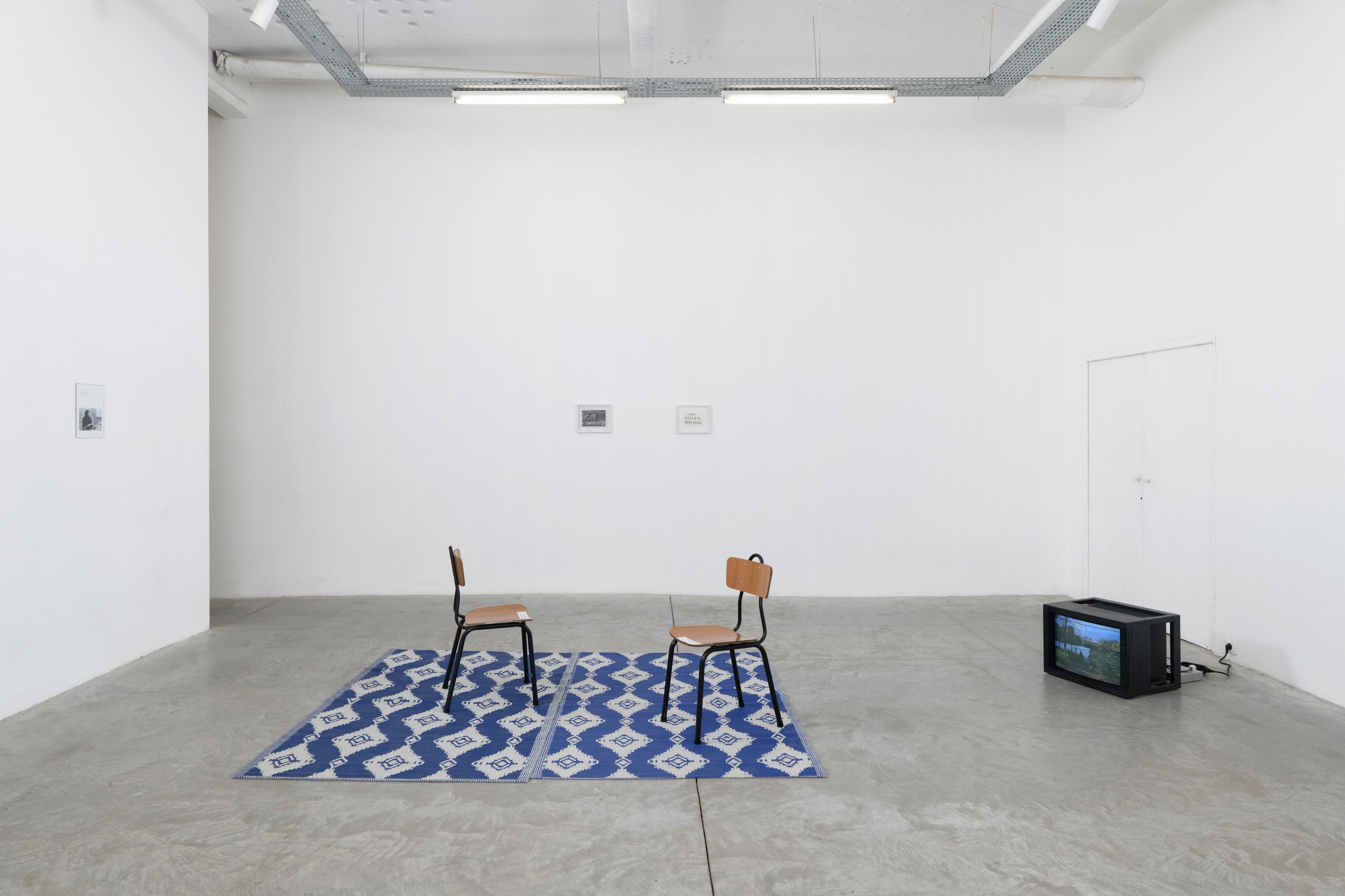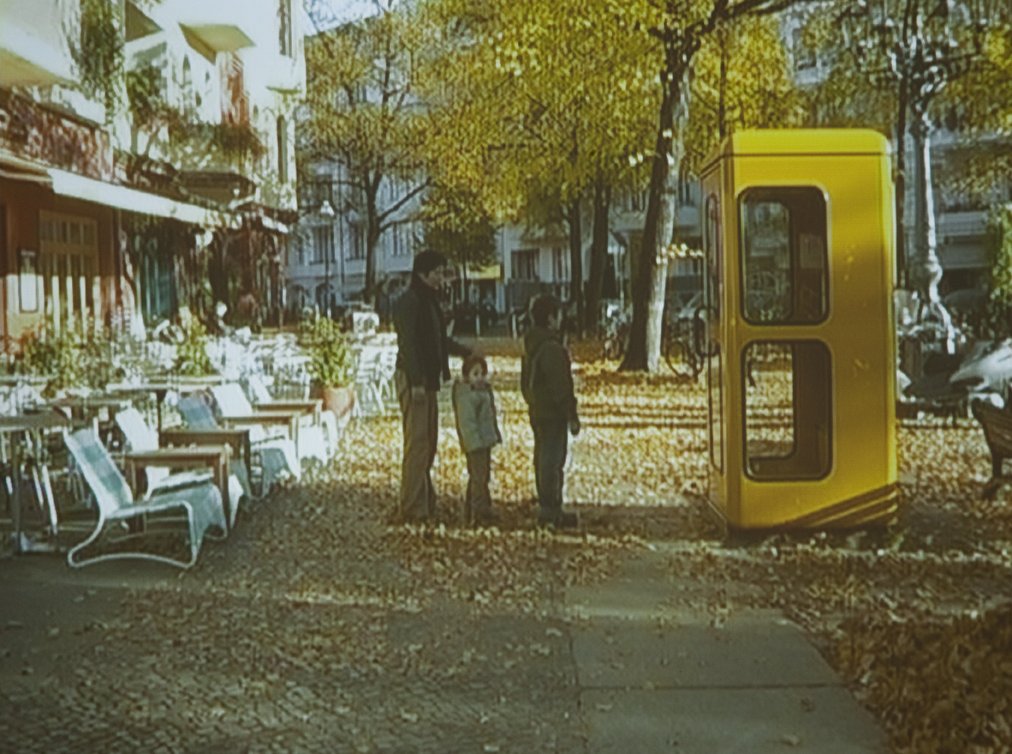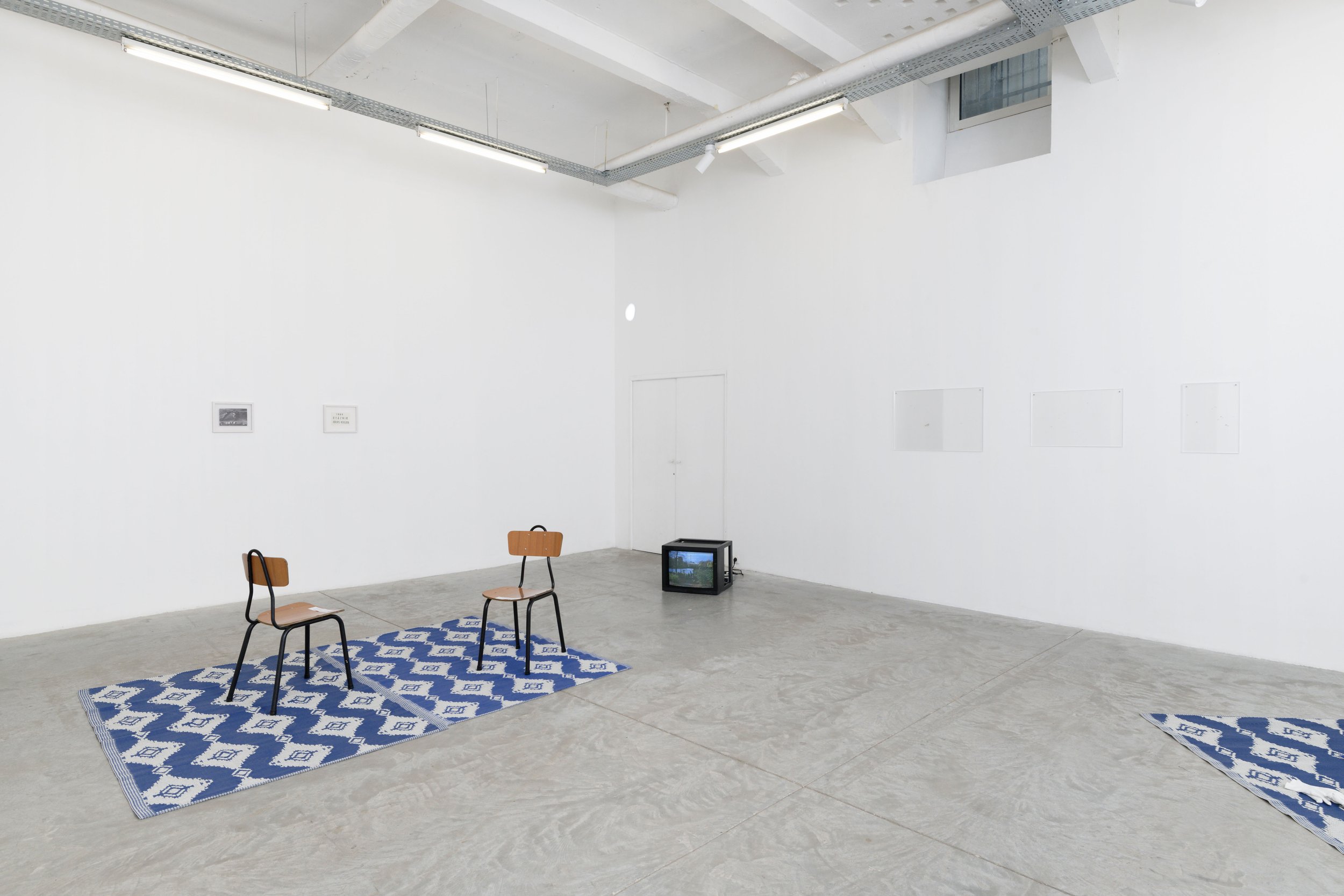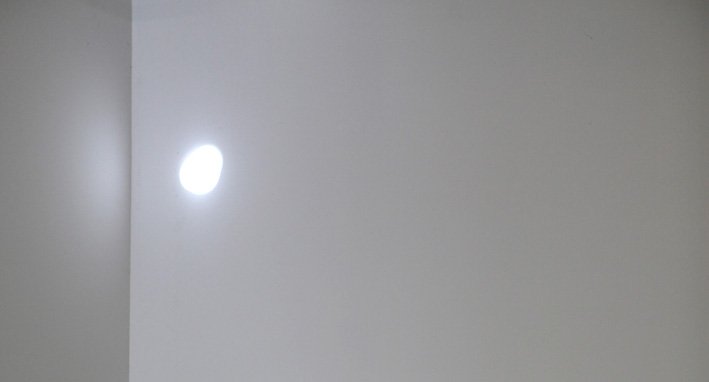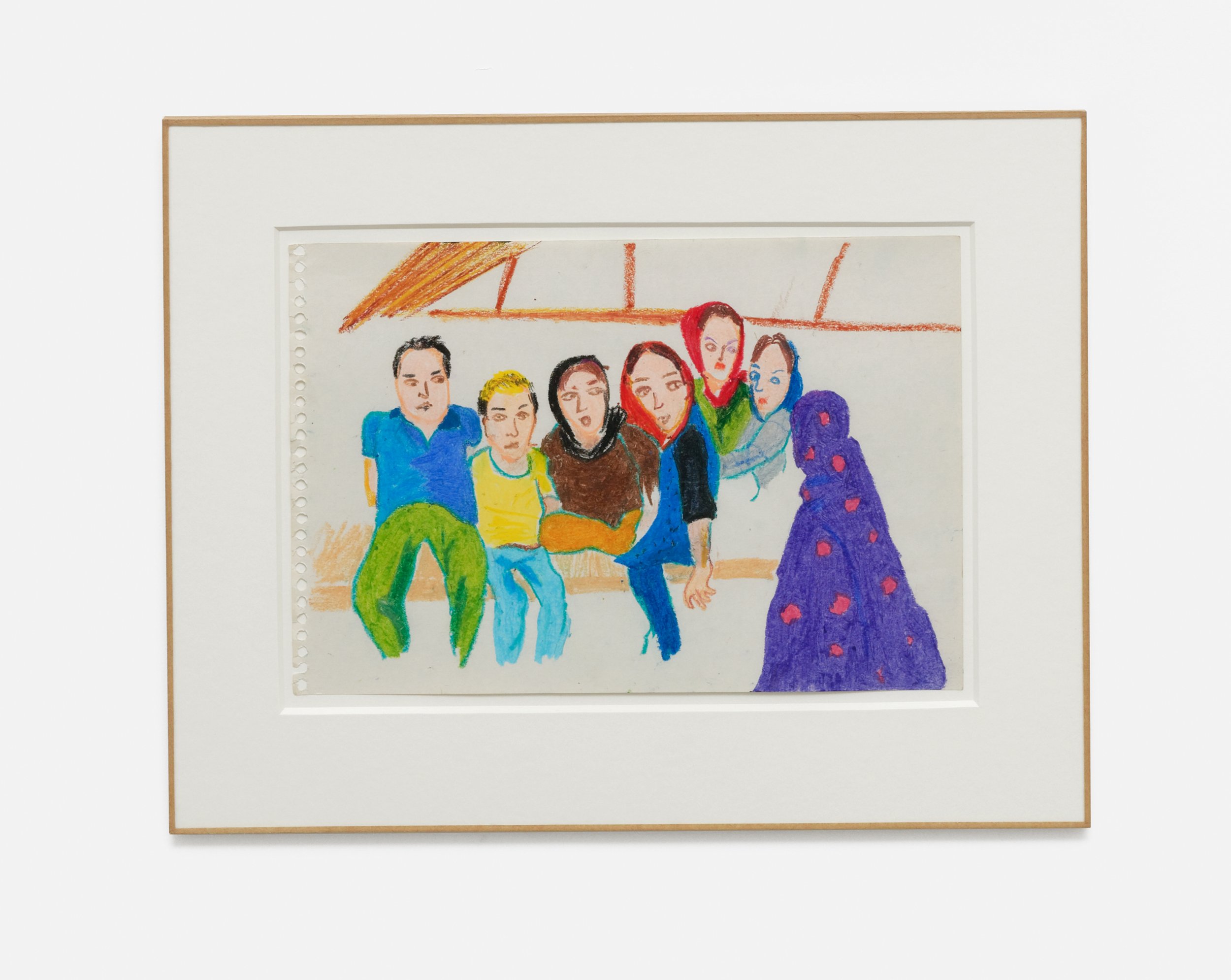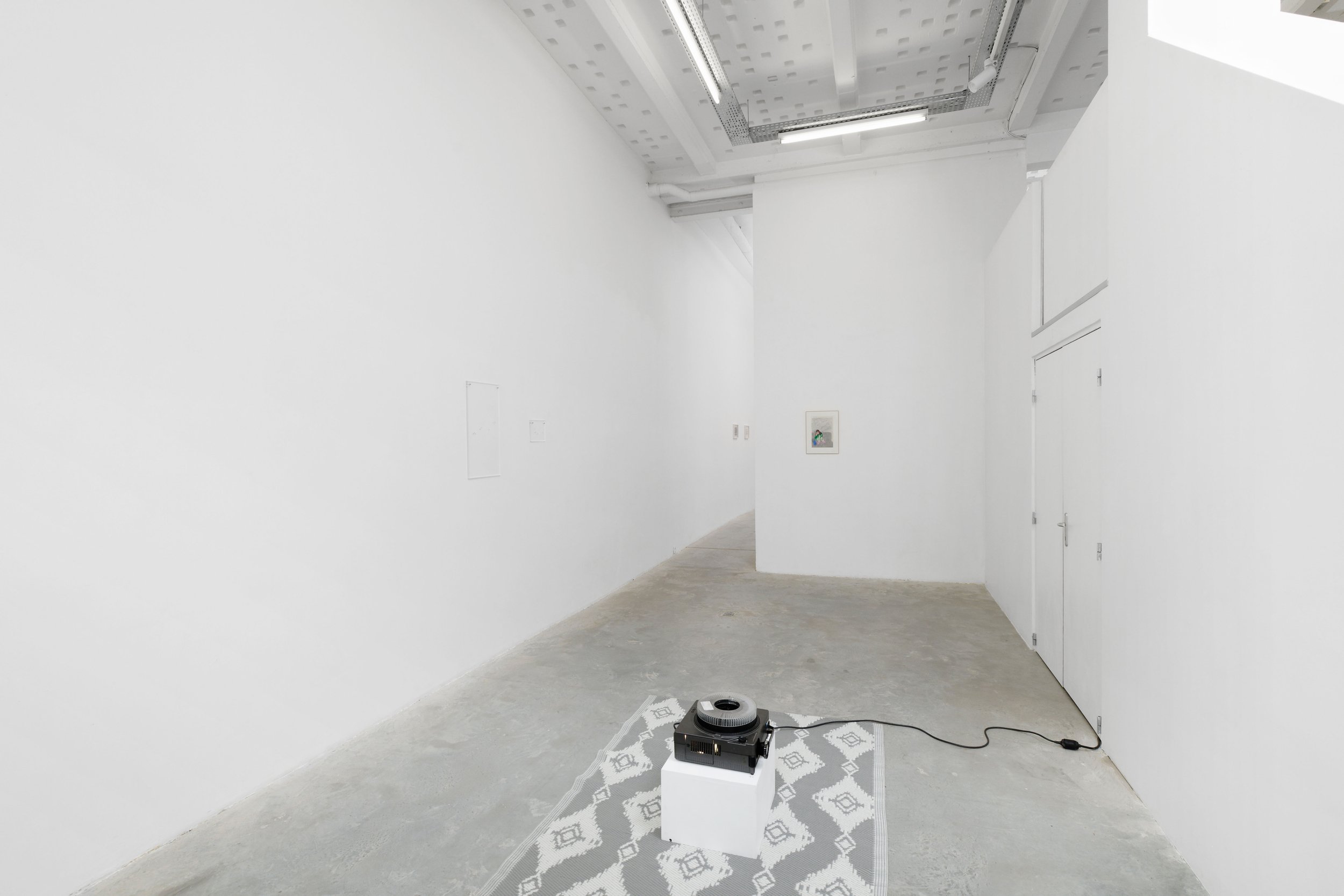Exhibition view. Photo Aurélien Mole
Before Waiting Becomes Part of Your Life
May 14 - July 26, 2022
gb agency, 18 rue des quatre fils, 75003, paris
with Mark Geffriaud, Apostolos Georgiou, Tirdad Hashemi, Paul Heintz, David Horvitz, Július Koller, Jirí Kovanda, Roman Ondak, Pak Sheung Chuen, and Yann Sérandour
-
iNTRODUCTION:
It all starts with a ray of light. The sun appears and rises, it peaks above us, and continues its journey to the West, disappearing from our sight as it reaches the horizon. Humanity has experienced this as mystery, miracle, and fact. Regardless, we still wait and marvel everyday at its occurence. Our very existence starts as waiting in warmth, even before waiting becomes part of our lives.
Before Waiting Becomes Part of Your Life is an exhibition that takes its name from an eponymous work by Roman Ondak. A collective show, it explores the possibilities opened by artists, who, – mesmerised as they often are by the invisible, the intangible, the spaces in between, that which could be, but not yet is – materialise time, allowing us to contemplate, experience and transform waiting.
The sun may or may not be present in the exhibition. On a sunny day and through the work or Yann Sérandour (Un temps nuageaux avec la possibilité d’un rayon de soleil, 2011) it may enter the underground gallery and travel across the space for about an hour, reflected from a mirror placed on a nearby window. Disappointment is a possibility, as it is for those who wait.
Throughout the exhibition rooms, the works of Mark Geffriaud seem to insist on this very fact. In the series Une certain douceur en prime (2018), Geffriaud cuts out the meteorological icons used in the weather pages of international newspapers. Isolated from the predictions they once illustrated, they float in between sheets of transparent plexiglass, announcing instead that weather exists, go figure what it will actually bring, rain or shine, on any given day.
In the center of the room, Pak Sheung Chuen offers another experience, one that is repeated for one minute every twelve hours. About the Same Level of Time #2 (2020) presents five wall clocks tilted six degrees to the right. For a minute at 2:43, the hands of the clock line up, briefly creating a unified image, a common horizon between our sight and that of time passing. Certainty lasts less than 60 seconds.
Reality bursts into the galleries with the work of Tirdad Hashemi, who – as she often does – extirpates us from our poetic reverie with her drawings. In one, a curled up character stares to an obviously alienating object: a French grammar book, one that needs to be studied, digested, internalised in order to please the capricious bureaucracy machine of migratory control.To wait is to anguish.
At the other side of the wall, Jirí Kovanda is Waiting for someone to call him. On November 18, 1976, Kovanda froze time. 46 years after his ephemeral action, invisible if it were not for the single photo that documents it, Jirí is still looking at the distance, sitting behind a desk in front of a phone, waiting in black and white.
On the floor, two monitors face each other, presenting as documentation two videos that are part of Roman Ondak’s large scale installation Before Waiting Becomes Part of Your Life (2010). In these, we see Maya, Ondak’s wife, teaching their children Adam and Martin to wait. In the various situations we see in the two videos (for instance, queuing outside an empty phone booth) the reasons for waiting become meaningless, even non-existent. Instead, it is transmission that is essential. Patience is the goal. Their youngest rebels against this early formatting, resisting quizzically, comically. Breath deeply and recognise that waiting is ahead, parents seem to warn sweetly.
On top of a carpet laid to welcome visitors, Paul Heintz’ Digicodes (2018) is playing on a turntable. A work created during moments of deep boredom when the artist had to take a job as a delivery man to pay the bills, Digicodes turns into music the codes used by Heintz to enter the halls of buildings around Paris.Time in between needs (to survive) and desires (to survive as an artist) is occupied by Heintz, who merges the physical spaces of waiting (the Parisian halls) with his own transformational journey.
Another artistic journey culminates for an instant in Július Koller’s works. In 1969, Koller equates his name to that of a question mark (OTAZNIK (Question Mark), 1969).To become, is to become a question.And so we are taken back to square one.
As if nearing the end of the show, David Horvitz is waiting to be rescued. In How to make yourself visible for a rescue boat when you are stranded in the dark at the bottom of a cliff on a rocky coast in Hong Kong (2012), Horvitz makes himself visible for a rescue boat when he finds himself stranded in the dark at the bottom of a cliff on a rocky coast in Hong Kong. The slides show the edge of the cliff, his back and waving arms illuminated from behind with a hard flash, his body drowned in the surrounding darkness.The slides go round and round in and endless loop, extending the waiting that is only fulfilled in this page:
The artist being rescued.
(David Horvitz, How to make yourself visible for a rescue boat when you are stranded
in the dark at the bottom of a cliff on a rocky coast in Hong Kong (2012), detail)
Occupying a corner of the gallery, as if bookending the exhibition, is a large diptych painting by Apostolos Georgiou representing one of his puzzling, ever-untitled scenes. A naked woman seems to do the dishes while two men talk, one naked, the other in a formal suit.Vulnerability meets officialness in an image that lets waiting and the notion of fulfillment float freely in an unpinned state between fact and fiction, symbolism and literality, poetry and reality.
Marisol Rodríguez, Paris, 2022


